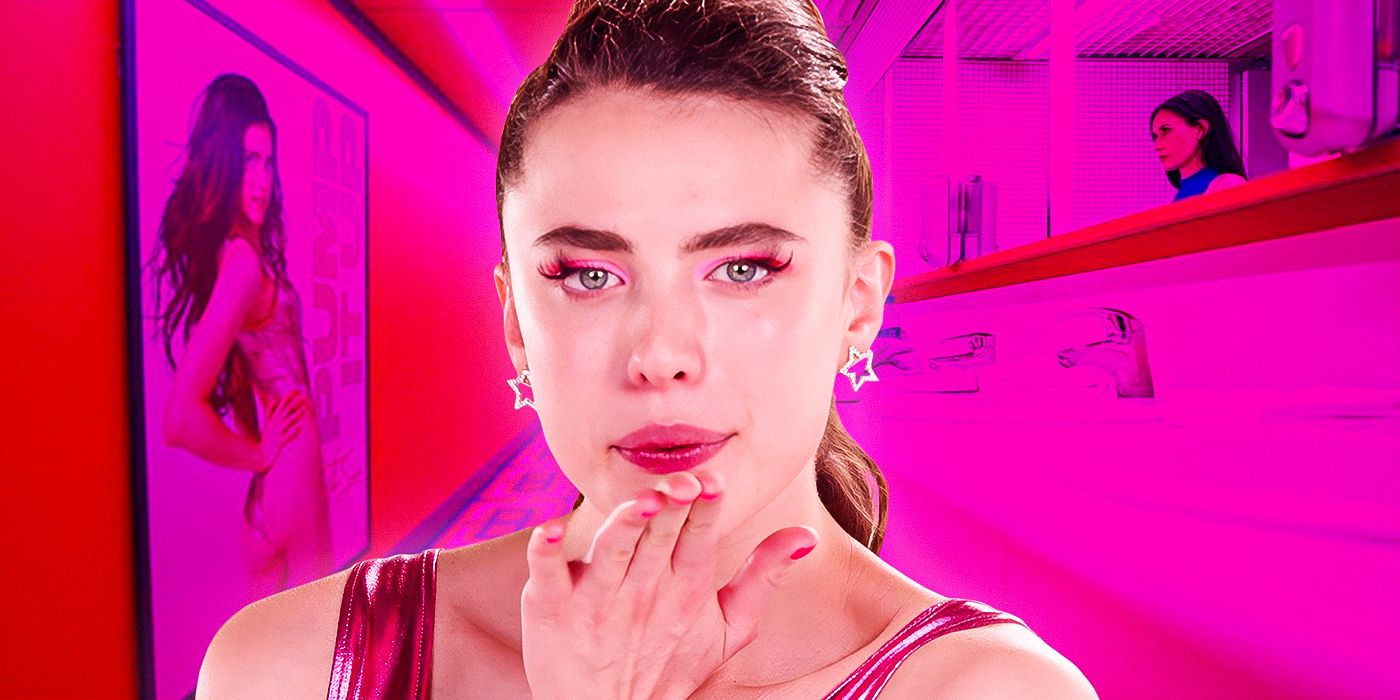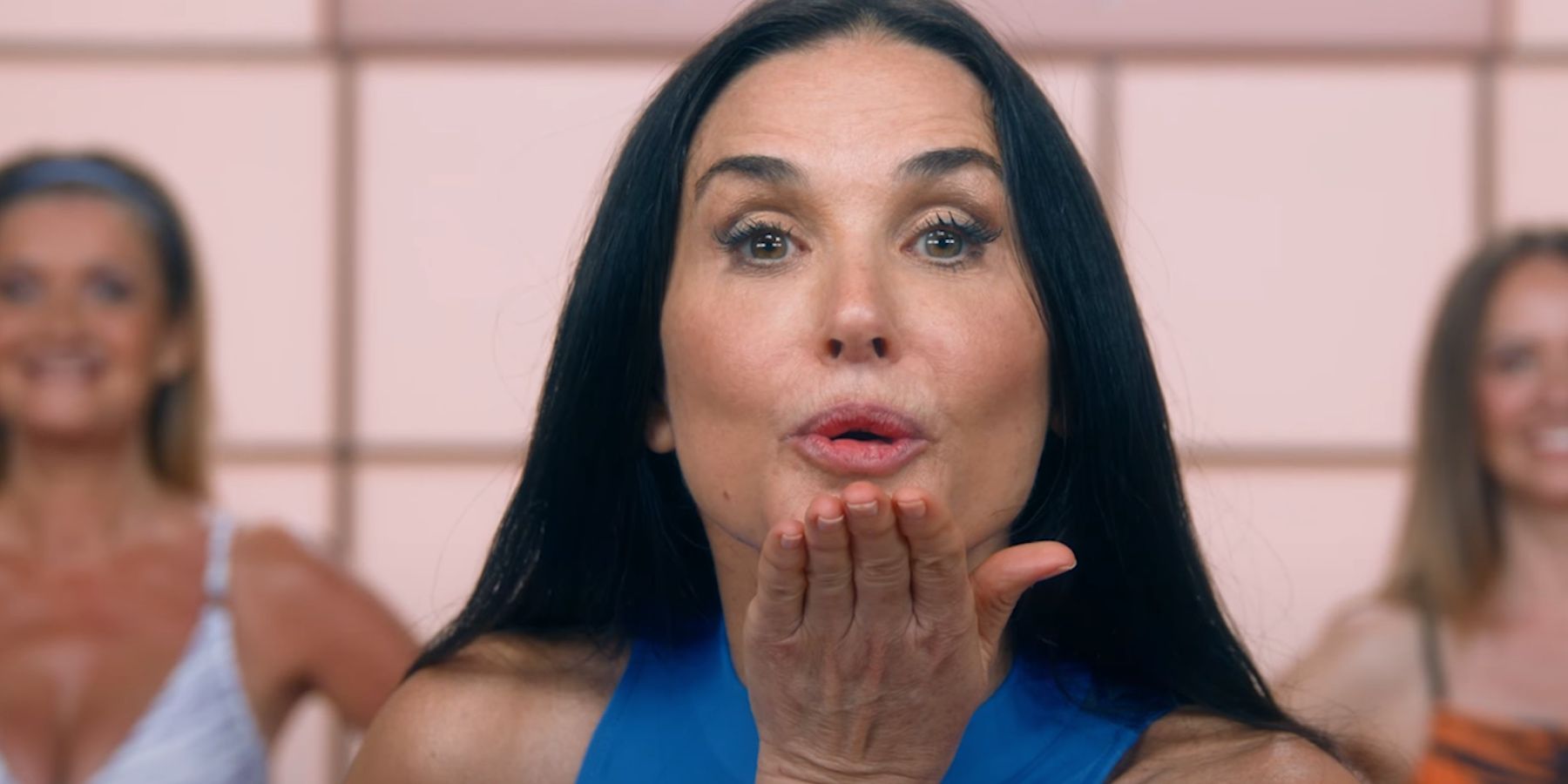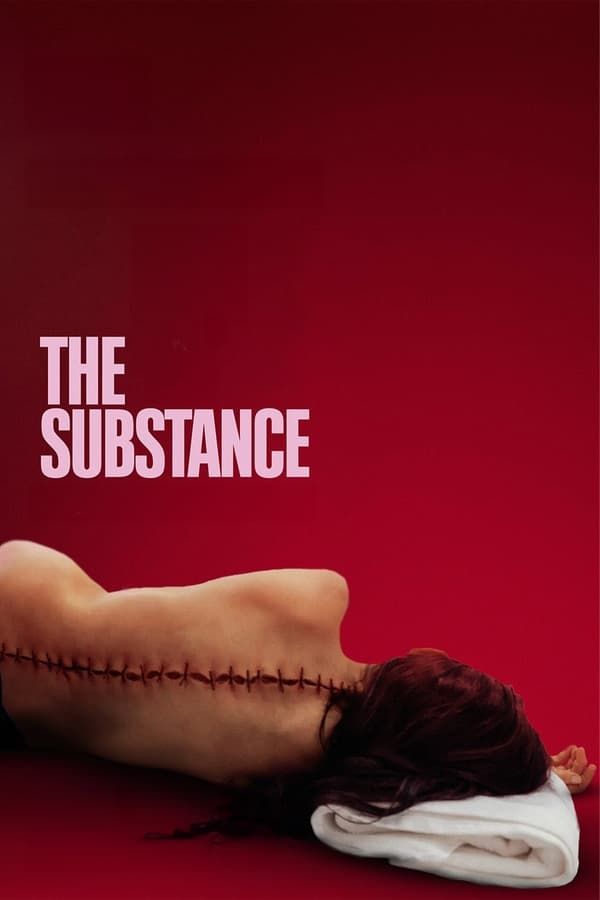[ad_1]
The Substance is full of symbolism and metaphors. It is a movie surrounded by conversation, but perhaps the most fitting way to view it is as a body horror feminist fairy tale.It is filled with patent references to Disney princesses, but subverts the themes of romance and fiction, instead showing the bleak reality of “happily ever after.” Princesses are some of the earliest role models for young girls, and they are recognizable for their youth and beauty. The Substance acts as a reclamation of femininity and the body. It is unfiltered in its portrayal of womanhood whilst also showing the brutal dangers of seeking perfection. However, The Substance visually creates its own hyper-reality, living in its own universe that is a glossy, glamorized version of our own. The distortion of reality is what leaves The Substance so open to interpretation and allows it to be viewed as a modern-day fairy tale.
‘The Substance’ References Iconic Disney Princesses
The Substance features pieces of imagery that can be associated with classic Disney princesses. Through Elisabeth (Demi Moore), the movie offers similarities to Snow White. The bathroom mirror is a prominent set piece; it is where Elisabeth first sees herself as Sue (Margaret Qualley) and is often used as a window for the audience, as the camera lingers on the mirror as opposed to reality. This is similar to the magic mirror from Snow White and the Seven Dwarfs, where the Evil Queen looks at her reflection and asks “Who is the fairest of them all?” believing it to be herself only to be informed it is Snow White. The Substance internalizes this idea, as when Elisabeth looks in the mirror, all she can see is Sue. She can no longer see her own beauty because she is plagued by comparison. This is most apparent in the sequence where she is preparing for a date; every time she is about to leave, she sees Sue’s billboard and returns to the bathroom to apply more makeup before she gives up and misses the date. No amount of makeup will make her see herself as beautiful as Sue.
Elisabeth’s transformation when she rapidly ages bears similarities to the Evil Queen’s old hag disguise, which links to the common idea in fairy tales that youth is desirable and signs of aging are used to create fear and unsettle the audience. The old hag is so sinister because she is the polar opposite of Snow White. The Substance replicates this by making Elisabeth the extreme opposite of Sue which is what makes her so shocking to the audience.

Related
‘The Substance’ Refuses to Age at Global Box Office
The body horror film premiered at Cannes and has already broken records for MUBI.
Sue’s narrative is much more akin to Cinderella. The big blue dress she wears for the New Year’s Eve broadcast is strikingly similar to the princess’ iconic blue dress. Yet, the most impactful similarity is the constant feeling of time slipping away, and the potentially devastating consequences if she runs out of time. There is the countdown of swapping every seven days and the unpleasant effects if time runs out. This leads to the final sequence with Sue, where she is racing to get home after her body starts rapidly decaying. She has to get back before she turns into a pumpkin, or in her case, before all her organs fall out. There are subtle references to other Disney princesses; the needle used to insert the substance is similar to the spindle Sleeping Beauty pricks her finger on, both subsequently causing the user to go into a deep slumber. The cramped framing of Elisabeth’s high-rise apartment resembles the enclosed feeling of Rapunzel’s tower.
‘The Substance’ Is a Dark Reminder That Fairytales Aren’t Real
Elizabeth is the protagonist; The Substance constantly reminds you that she is the matrix and everything the audience sees is through her perspective. Yet, the conditioning of fairy tales means she feels more like Sue’s wicked stepmother; she is not as youthful or as relevant. It presents this feeling of discontent women can feel towards themselves and their bodies as they age and the feeling of relentless comparison. The Substance shows parallels between Sue and Elisabeth in order to constantly remind the audience that the evil queen was once a princess herself — one who has been made to believe time has robbed her of her youth and beauty. The movie’s finale features a sucker-punch of a line delivery by Dennis Quaid, who tells Sue that “Pretty girls should always smile.” It is this re-emphasis of expectations of femininity and beauty standards that can be seen all throughout princess stories. The starkness of The Substance acts as a way to untangle this web of lies. There is no prince and there is certainly no happily ever after.
The Substance is in theaters now. Click below for showtimes near you.
[ad_2]
Source link






